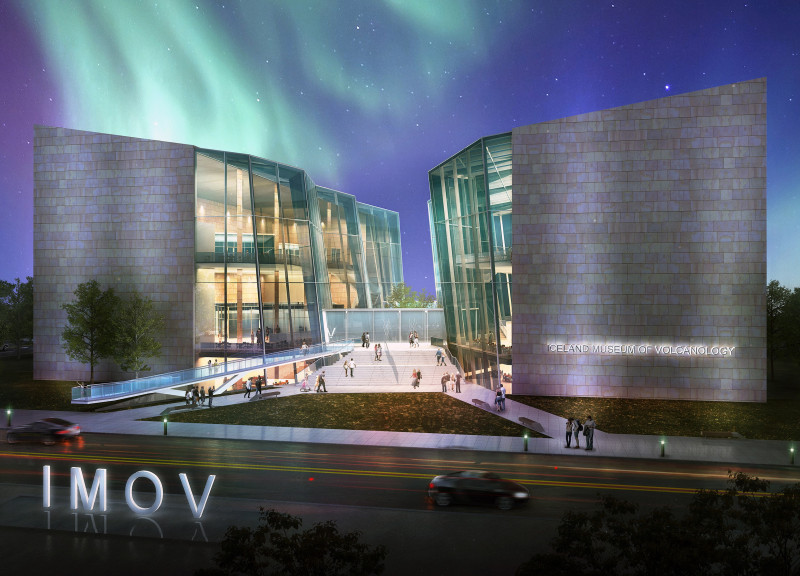5 key facts about this project
The Iceland Museum of Volcanology (IMOV) is situated in a region known for its unique volcanic landscape. It serves to educate visitors about volcanic activity and its impact on the environment. The design features two interconnected buildings that focus on functionality and sustainability. By blending into its surroundings, the museum aims to reflect Iceland’s geological and cultural identity.
Design Concept
Two distinct buildings house the museum's various functions. The first building includes essential spaces such as a reception area, offices, and conference rooms. The second building features exhibition halls and an archival floor located in the basement. This arrangement allows for a well-rounded educational experience, encouraging visitors to explore and learn about volcanology in a comprehensive manner.
Connectivity and Interaction
A notable feature of the design is the inclusion of two glass catwalks connecting the two buildings. This design choice promotes interaction and openness, making it easy for visitors to move between spaces. An outdoor courtyard with a water feature enhances the overall experience, acting as a welcoming space for gatherings and events. This thoughtful arrangement helps to create a lively atmosphere where people feel encouraged to engage with one another and the exhibits.
Sustainability and Materiality
Sustainability plays a crucial role in the museum's design. The structure is designed to achieve net-zero emissions. A geothermal heat pump provides efficient heating, while sloped roofs are equipped with solar panels to collect energy. The use of Red Rhyolite, a volcanic rock found in the region, connects the museum to its local environment. This choice not only contributes to the building's durability but also reinforces its ties to the geographical context of Iceland.
Structural Systems
The structural design employs sloped steel trusses and cross-bracing to create large open spaces, with these elements cleverly hidden within stone-clad walls. One of the most compelling aspects is the undulating glass facade, which offers views of Hverfjall volcano and the northern lights. This feature allows visitors to experience the beauty of the natural world while inside the museum, creating a connection that enhances the educational purpose of the facility.






















































